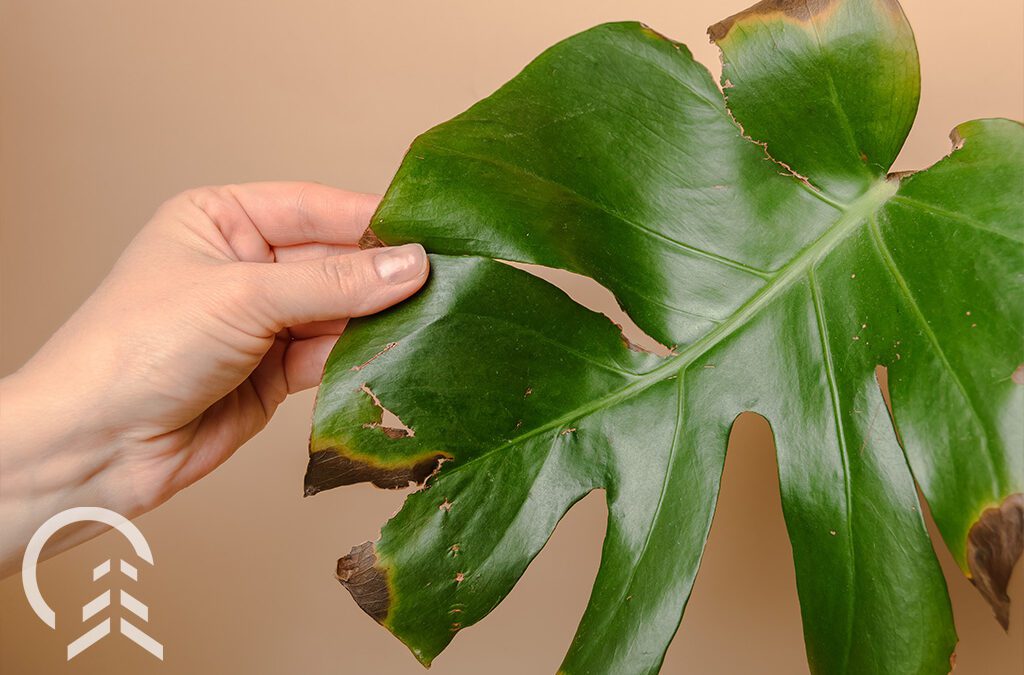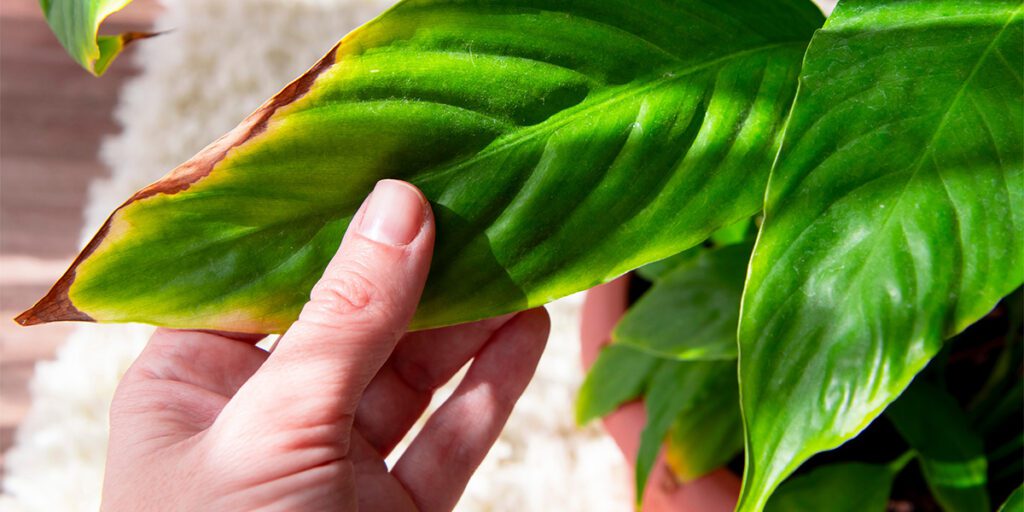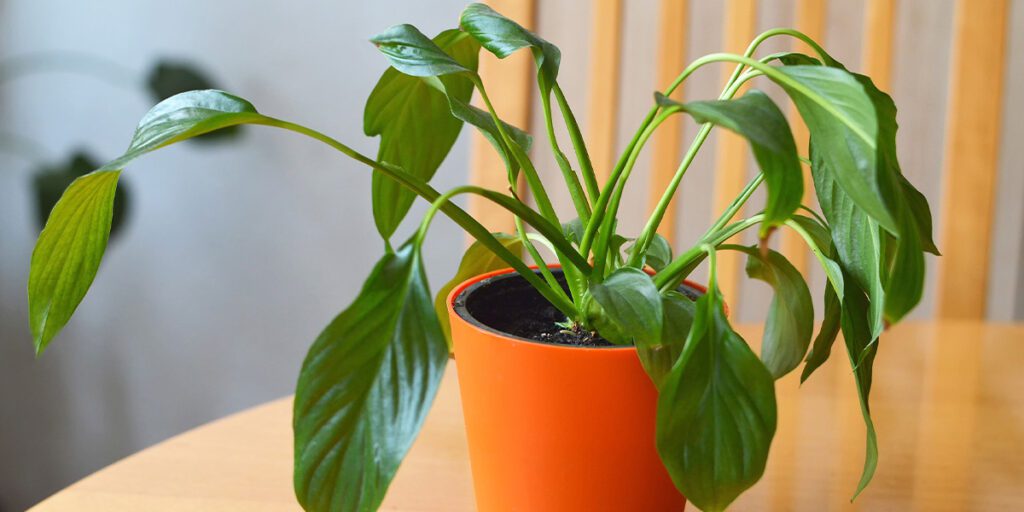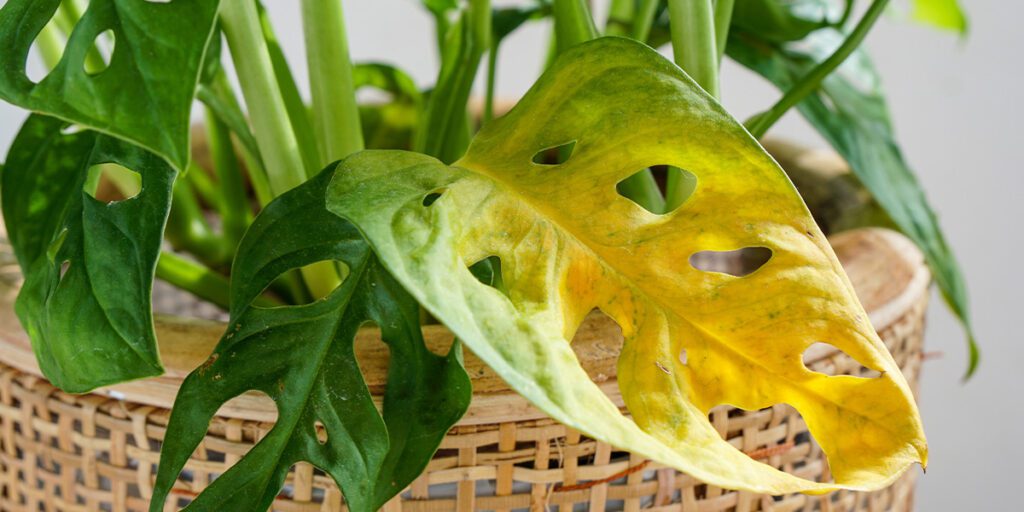Winter can be a stressful time for houseplants–cold drafts, furnaces, lack of light, and dry air can be taxing on tropical plants that are accustomed to steady climates. While they may not be able to voice concerns, they can still give us many signs that they’re in need of an adjustment. If we know how to identify the signs, we can help them before any issues turn into a major problem!
How Do You Tell If Your Plant is Stressed?
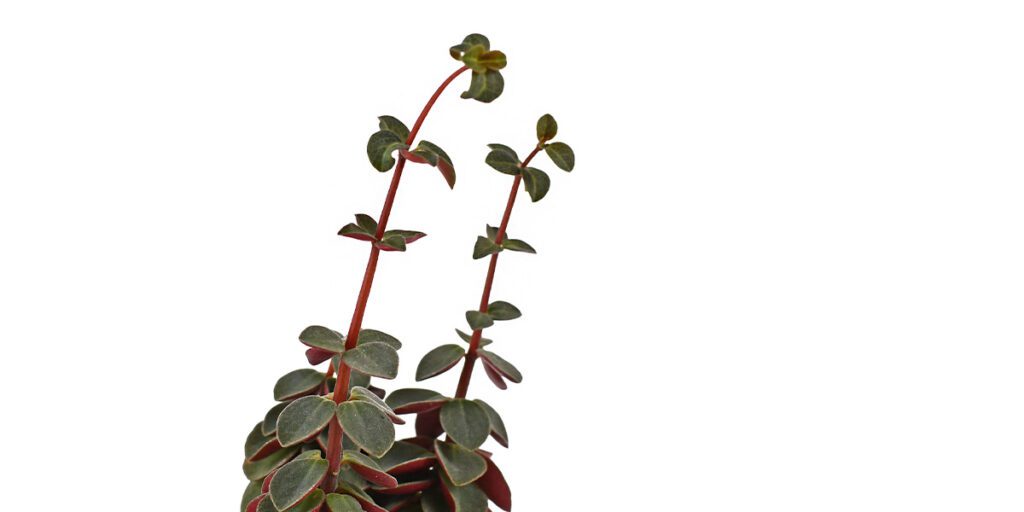
Signs of Lack of Light
While the sun is shining on the southern hemisphere, us northerners get to enjoy longer starry nights during the winter. Unfortunately, that leaves our tropical houseplants wondering where the sun went. If you see them leaning towards the window or getting leggy, it means they’re lacking light. Pale green, white, or yellowing leaves also indicate stress from low light.
Solution: Move your houseplants to a sunnier window, such as a south-facing or west-facing exposure. Move them closer to a window; just make sure they’re not touching cold glass. Rotate them 1/4 every time you water, so all parts of the plant receive rays. And finally, dust/wipe the leaves more often so they can absorb more sunlight.

Signs of Lack of Humidity
Low humidity is one of the biggest stresses in our home environment during the winter, both for our skin and our houseplants. With the furnace on, the humidity can drop well below 50%, leaving our tropical companions gasping for moisture. Common signs of low humidity include brown edges on leaves, curling, crisping, or wilting. If your watering routine is still on the mark, your houseplant may be asking for more humidity!
Solution: Set up a tray of pebbles with water in it and place the plant pots on top. Group your houseplants together to create a humid microclimate. Move affected plants to a more humid room, like the kitchen or bathroom–or buy a humidifier for specific rooms. Note, while misting your plants with a spray bottle does help temporarily, it must be done regularly, e.g. a few times per day, to have a lasting effect.

Signs of Underwatering
Surprisingly, underwatering is less common during the winter, even though the conditions are drier. That’s because many houseplants go dormant, or simply grow less with less sunlight. Nevertheless, a fireplace or furnace vent can do fast work at drying out a houseplant if it hits the right spot. Drooping leaves, light and crispy leaves, and soil pulling away from the edge of the pot are stress signs of too little water.
Solution: Research your houseplant to know how much water it requires. Check the soil to ensure that it’s dry. If so, water your plant thoroughly to allow it to recover, and water it again in the next few days when the top of the soil dries out. Then, resume a proper watering routine after that.

Signs of Overwatering
Overwatering is easy to do during the winter, simply because a dormant houseplant’s water needs are less. If we keep up the same routine that we had during the summer, we could be unknowingly stressing them with too much H2O! Drooping yellow leaves and soft and limp leaves are signs of overwatering. Some plants, like succulents, may drop leaves to try to get rid of excess moisture. Moldy, soft, or rotting stems are another sign.
Solution: Research how much water your houseplant needs during the winter. Cacti and succulents, for example, don’t need much at all. Probe the soil surface with your finger. Even though the surface looks dry, it still could be wet underneath. Once you confirm that overwatering is the problem, stop watering until the right amount of soil is dry, e.g., the top inch, depending on your specific plant’s needs. Adjust your watering routine after that to ensure it receives the correct amount.
Know Your Specific Plant’s Needs
Sometimes it’s not easy to read a plant’s stress signs. For example, yellowing leaves could indicate a lack of light, too much water, or too little. Plus, different plants may exhibit symptoms differently. To get a proper diagnosis, it’s important to research your houseplant and investigate each problem thoroughly before you take action. Check the moisture in the soil, check for pests, and look at all the signs before you reach a conclusion.
Fast breathing, sweaty palms, and a churning stomach are all common signs of a human in distress, but houseplants are more subtle. They’re not going to get angry, but they’ll still give us clear signs of a problem in their environment. If you need help figuring out a solution to houseplant stress, feel free to contact our garden centers, or drop by to talk to an expert in person!

